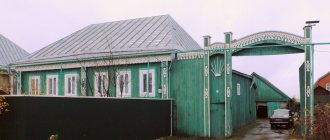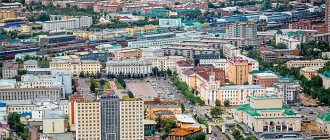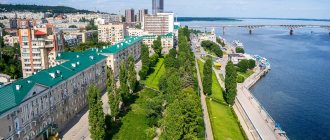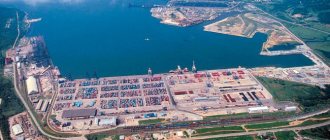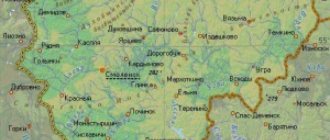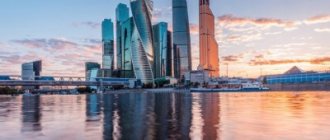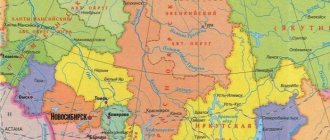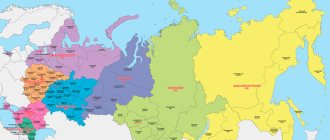What holiday is it today?
09 February 2022, Wednesday
Today are holidays and events: Aeroflot's birthday International Dentist Day Memorable date in Russian military history: The feat of the cruiser Varyag Tomorrow: Diplomat's Day
Today is an Orthodox holiday: Transfer of the relics of St. John Chrysostom, Archbishop of Constantinople... Tomorrow: St. Ephraim the Syrian. Venerable Ephraim of Novotorzhsky. Venerable Ephraim of Pechersk, Bishop of Pereyaslavl. Venerable Theodosius of Totem, the head and founder of the Spasosumorin monastery...
Today is a national holiday: Chrysostom's Fire... Tomorrow: Ephraim's Day...
Seasons
Seasons, four periods of the year (spring, summer, autumn and winter) characterized by certain average temperatures. The period during which the Sun passes through one of these sectors is called the season. Spring in the Northern Hemisphere and autumn in the Southern Hemisphere begin when the Sun passes through the initial circle of declination and its right ascension is 0° (vernal equinox). Summer in the Northern Hemisphere and winter in the Southern Hemisphere occur when the sun's right ascension is 90° (summer solstice). Autumn in the Northern Hemisphere and spring in the Southern Hemisphere begin when the sun's right ascension is 180° (autumnal equinox). The beginning of winter in the Northern Hemisphere and summer in the Southern Hemisphere is considered to be the winter solstice, when the direct ascension of the Sun is 270°... Next: Seasons. Russian folk calendar. Monthly words...
Culture
Novgorod is one of the largest cities of its time. It is no coincidence that he is often called Mister Veliky Novgorod. In the center of the city was the St. Sophia Cathedral. The pavements in the city were paved with logs and were constantly renewed. The city itself was surrounded by a moat and wooden walls. The city practiced wood and stone construction. As a rule, churches and temples were built of stone, one of the functions of which was to store money.
Chronicles, fairy tales and epics were created in the Novgorod land. Much attention was paid to icon painting. The brightest painting of that era is “Angel with Golden Hair,” which today can be seen in the Russian Museum of St. Petersburg.
Architecture and fresco painting also developed in the principality. The main direction of development is realism.
Folk calendar about every day
Every day one season always replaces another and this determines a person’s way of life. In connection with this, a folk calendar was formed in which there were practically no nameless, unmarked days. Every day was special, had its own purpose. All this was determined by climate conditions and astrological phenomena.
A calendar is a system for counting periods of time. The first calendars arose a long time ago, in ancient times, because there was a need to measure time. The word calendar comes from the Latin words caleo - to proclaim and calendarium - debt book. This is due to the fact that in Ancient Rome the beginning of each month was especially proclaimed, and because it was customary to pay debts on the first day of the month. Different peoples counted time differently. Some calendars are based on the changing phases of the moon - lunar calendars; in others - the change of seasons - sunny; in others, the length of the year was coordinated with the change of seasons, and the counting of months was associated with the phases of the Moon. Such calendars are called lunisolar.
In Rus', the calendar was called a monthly calendar. Every day, the month book covered the entire year of peasant life, “describing” day by day, month after month, where each day had its own holidays or weekdays, customs and superstitions, traditions and rituals, natural signs and phenomena. The cyclical nature of the calendar is reminiscent of human life, where spring is youth, summer is heyday, autumn is the time of harvesting fruits (it’s good if there are some, otherwise you can live your life without collecting fruits), winter is the time of wisdom and peace. This cyclicality and rhythm determined the way of life of the farmer. The folk calendar was an agricultural calendar, which was reflected in the names of the months, folk signs, rituals and customs. Even the determination of the timing and duration of the seasons is associated with real climatic conditions. Hence the discrepancy between the names of the months in different areas... Next: Folk calendar...
Main city
The center of the subject of the Russian Federation 53 is Veliky Novgorod , founded in 859 and having the name Novgorod until 1999. The population, according to data for 2022, is almost 225 thousand people. (almost 33% of the region’s residents). The city is divided into 2 asymmetrical parts by the Volkhov River. At a distance of 6 km from Veliky Novgorod there is a large freshwater lake Ilmen.
Fishing calendar for every day
The fishing calendar should not be taken as an absolutely indisputable truth. Fish biting is greatly influenced by a whole range of natural factors, as well as the influence on the nature of man himself. You must not forget that the fish’s bite depends and is determined not only by the calendar dates and biological cycles of their life, reflected in the calendar, but also, no less, by the state of their habitat; the bite also depends on weather conditions: air and water temperatures, cloudiness, wind direction and strength, etc... Next: Fishing calendar...
Political structure
The Novgorod feudal republic was formally governed by a prince, but in reality the system of government can be represented in the form of an inverted triangle.
The real power was with the Veche and the boyars. Suffice it to say that it was the veche that appointed the prince, and it could also expel him. In addition, at the citywide assembly, which functioned within the framework of the boyar council (300 gold belts), the following were appointed:
- The prince was invited along with his squad. His residence was outside the city. The main task is to protect Novgorod land from external threats.
- Posadnik is the head of the city administration. His tasks are monitoring the prince, court in the cities, and governing the cities. He was subordinate to the city's street elders.
- Tysyatsky - head of the city administration and city militia (assistant mayor). He was involved in population management.
- The archbishop is the head of the Novgorod church. Tasks: storage of archives and treasury, responsibility for external relations, monitoring of trade, compilation and preservation of chronicles. The archbishop was confirmed by the Moscow metropolitan.
The prince could be summoned by the Novgorodians, but he could also be expelled, which happened often. A gift (agreement) was concluded with the prince, which indicated the rights and obligations of the prince. The prince was seen only as a protector against foreign invaders, but had no influence on domestic politics or the appointment/removal of officials. Suffice it to say that during the 12th-13th centuries the princes in Novgorod changed 58 times! Therefore, we can safely say that the real power in this principality belonged to the boyars and merchants.
The political independence of the Novgorod Republic was formalized in 1132-1136 after the expulsion of Prince Vsevolod Mstislavich. After this, the Novgorod land eliminated the power of Kyiv and became a virtually independent state with a republican form of government. Therefore, it is customary to say that the Novgorod state was a boyar republic with elements of a system of city self-government.
Orthodox calendar about every day
Orthodox calendar: Orthodox, Church and Christian holidays.
The church year is an alternation of weekdays and holidays. On weekdays, a person is called to work “by the sweat of his brow to earn his bread.” Holidays are given in order to feel liberation, to rise above the bustle and routine of the world, to feel involved in the highest of worlds, “where there are no illnesses, sorrows and sighs, but endless life.” Since ancient times, holiday cycles have been associated with the seasons. The pagans associated them with the worship of the forces of nature, the cult of which in the Old Testament was replaced by gratitude to the Creator for the universe. And although the connection between holidays and the seasons has not completely lost its power, since God is present in everything, in the plant and animal world, in human works, it nevertheless faded into the background, giving way to a spiritual foundation built on the Sacred Scriptures. The history of Orthodox holidays dates back to the times of the Old Testament. Each of the Orthodox holidays is dedicated to the remembrance of the most important events in the life of Jesus Christ and the Mother of God, as well as the memory of saints... Next: Orthodox calendar...
Novgorod region
The region is located in the north-west of the Russian Plain, occupying the territory of the Ilmen Lowland and the northern spurs of the Valdai Upland.
The area of the region is the sixth of the seven regions of the Northwestern Federal District and is 54.5 thousand km². The length of the region’s territory from west to east is 385 km, and from north to south – 278 km. The Novgorod region borders on the Pskov region in the west and southwest, on the Tver region in the south and southeast, on the Leningrad region in the north and northwest, and on the Vologda region in the northeast. Population - 596,508 people. (2020). Veliky Novgorod has a population of 222.9 thousand people
The Novgorod region is located in a forest zone, which is divided into two subzones - taiga and mixed forests. Coniferous forests are gradually replaced by mixed forests as the temperature increases to the south. In the taiga subzone, coniferous forests alternate with small-leaved forests. Here, along with coniferous and small-leaved species, there is a small admixture of broad-leaved species (oak, linden, maple, elm, ash). Significant areas of the southern taiga subzone are occupied by swamps and meadows. In some places small groves of oak and linden have been preserved.
Currently, forests and shrubs occupy about 68% of the region's territory, about 16% of the area is occupied by agricultural land - arable land, hayfields, pastures, gardens, more than 13% is under swamps and waters, 3% of the area is occupied by other lands.
Shrubs grow under the canopy of trees - buckthorn, honeysuckle, hazel, wolf's bast, raspberries, currants. The grass cover consists of scilla, anemone, lily of the valley, crow's eye, chickweed, hoofweed, liverwort, strawberry and other plants. The forest provides raw materials for 20 thousand types of products and products. Every year a lot of mushrooms and berries are collected in the forests. Of the mushrooms, the most valuable are porcini mushroom, milk mushroom, boletus, saffron milk cap, and boletus. Many forest plants, as well as swamp and meadow plants, are used as medicinal raw materials. These include rose hips, raspberries, blueberries, St. John's wort, cumin, mint, celandine, dandelion, yellow sweet clover, etc. Good honey plants are fireweed, willow, raspberries, heather, and linden.
The forests have clean, healthy air, which is why sanatoriums, holiday homes, children's health camps, and tourist centers are built in them.
The fauna of the Novgorod region is represented by species characteristic of central Russia: foxes, moose, stoats, white hares, shrews, wood mice. There are also brown bears, lynxes, wolves, and wild boars. In the Novgorod forests you can find sika deer brought from the Far East. Among the forest inhabitants living in trees, the squirrel and marten are notable.
Among the birds, crossbill, great spotted woodpecker, pika, bullfinch, nuthatch, and tit are especially common. Large forest birds include black grouse, hazel grouse, and capercaillie.
The fauna of open spaces is less rich than in the forest. In fields, meadows and pastures, in bush thickets there are brown hare, gray vole, field mouse, polecat, as well as some forest animals (fox, ermine, weasel).
In reservoirs and swamps, the most common mammals are the otter and mink, which have valuable fur, beavers, and muskrats. Of the birds, the majority are waterfowl - ducks of various species and geese. In the swamps there are waders (snipe, curlew), cranes, and in the floodplains of rivers - lapwings. Vipers, snakes, viviparous lizards, and grass frogs also live in damp places.
There is a wide variety of fish in the lakes and rivers of the region. Bream, perch, pike, sop, ide, ruff, and burbot are common. Lake Ilmen is especially rich in fish. The fast, rapids rivers of the Valdai Upland are home to trout. In some reservoirs, whitefish, nelma, ripus, and eel brought from other regions of Russia have bred. Carp are artificially bred in ponds and lakes.
Many animals common in the region - squirrels, muskrats, martens, minks, moles, hares, foxes, raccoon dogs - are of commercial importance. The objects of amateur hunting are birds: ducks, geese, black grouse, hazel grouse, wood grouse.
48 species of birds (23% of all nesting in the province) and 11 species of mammals (18%) are listed in the Red Book of the Novgorod Region.
Russian folk calendar for every day
The word “sign” comes from the word “notice”, i.e. observe. As a result of observing what happens around a person every day, he accumulates life experience. This knowledge was passed down from generation to generation, carefully preserved and people trusted it as a sacred book. Many signs have come to us from the depths of centuries without losing their knowledge. Each of us is free to choose: to dismiss all this as an absurd superstition or to take a closer look at the signs and take the centuries-old experience of generations more seriously. Most of us, when taking exams, ask them to scold them, boasting about some kind of good fortune or luck, spit so as not to jinx them or knock on wood, take a detour if a black cat crossed the road, are afraid of the number 13 and much more. And who among us does not have lucky things, numbers? Who has never resorted to the help of fate at least once in their life, who has not believed in secrets? It’s as if everything connected with signs is hidden somewhere deep in our subconscious. Often we remember them mechanically, unconsciously, or just as a joke. But, undoubtedly, the signs contain a lot of accurate knowledge and practical wisdom of our ancestors. They cover all the characteristic, often difficult to perceive, natural phenomena. Signs have preserved a lot of what was in old folk holidays and customs; they help predict the weather, grow crops... Next: Folk signs...
Economic features
The lack of good arable land led to the active development of crafts and trade in the Novgorod Republic . Among the crafts that stood out were: iron production, fishing, hunting, salt making and other crafts characteristic of the northern regions. Trade was mainly carried out with neighboring regions: the Baltic states, German cities, Volga Bulgaria, Scandinavia.
Novgorod was the richest trading city in Rus'. This was achieved by the advantageous geographical location, as well as the presence of trade relations with various regions, including with Byzantium and the Caucasus. Basically, Novgorodians traded furs, honey, wax, iron products, pottery, weapons, and so on.
Holiday calendar, dates and events of the year
All state and professional holidays in Russia, including significant World and International holidays, and other equally interesting holidays and events about every day.
The holiday has always kept pace with the history of mankind. Social time can be divided into three types: everyday life (weekdays), weekends and holidays. Everyday life is a series of practices repeated day after day and every day (work). Weekends are regular breaks from the rush of everyday life. It is believed that on weekends a person should restore his strength after working days. Day off, non-working day. A holiday is a day of celebration established in honor or in memory of someone or something. A day or series of days celebrated by the church in memory of a religious event or saint... Next: Calendar...
Administrative division
The 53rd region of Russia is divided into:
- 3 large cities of regional significance;
- 7 small towns that are regional centers ( region 53 is one of the outsiders in the Russian Federation );
- 11 urban-type settlements;
- 113 settlements;
- number of small villages not stated in official reports.
Prayer book, Orthodox prayers for every day
Prayer is the most powerful means for healing all illnesses - both physical and mental. Prayers can be laudatory or grateful, petitionary and repentant. If we have offended God, sinned, we must ask Him for forgiveness, that is, repent. Such prayers are called repentant prayers. If everything is fine with us, if we and our loved ones are healthy and prosperous, if we have a place to live, something to wear, something to eat, we must glorify and thank God for this. Such prayers are called praise or thanksgiving. If some misfortune, illness, trouble or need happens, you need to ask God for help. Such prayers are called petitionary... Next: Orthodox prayers...
Tourism in the Northwestern Federal District
The Northwestern Federal District is extremely interesting from the point of view of tourism, although it is worth noting that its development is not carried out in all regions, and in some regions it is rather poorly developed due to inaccessibility. The leaders are the Republic of Karelia, Murmansk, Pskov, Novgorod, Leningrad, Arkhangelsk and Vologda regions. In this case, St. Petersburg can be left out of the equation; its leadership is undeniable.
However, the potential for tourism development is very large; the question is the development of transport infrastructure and investment in the industry. There are interesting places for tourists in every region of the district; this includes both architectural monuments and numerous natural attractions. Everything is good from the point of view of hunting and fishing.
Zodiac, astrological, eastern calendar. Zodiac signs
In ancient times, to establish the calendar, priests used knowledge of the positions of all the planets. Before the reform of Peter 1, the New Year was celebrated on the Day of the Autumn Equinox. On this day, according to ancient legend, the most peaceful treaty was concluded between the Great Race (ancient Slavs) and the Great Dragon (ancient Chinese) and it was approximately 7518 years ago... For the ancient Slavs, the calendar month corresponded to the lunar cycle from new moon to new moon, taking into account such Thus, the relationship of the entire annual cycle with astronomical and natural phenomena. There was no coherent calendar system. The main natural phenomena are still considered to this day to be the days of the solar equinox and solstice - the Slavic holidays Maslenitsa, Kupala, Ovsen and Kolyada. But during the time of Peter 1, all ancient Slavic calendars were abolished and a new Western European calendar from the Nativity of Christ (Julian calendar) was introduced, while the beginning of the calendar was moved to January 1. The Julian calendar (old style) did not take leap days into account and accumulated one extra day every 128 years. After the October Revolution in 1918, the Gregorian calendar (new style) was introduced in Russia, according to which an amendment of 13 days was introduced. The calendar of the ancient Slavs was based on two planets: the Sun and the Moon. And now they don’t use anything at all. The calendar has become static. There is no such thing as the calendar, it turns out, resting on some planet. Nobody even knows about it. There are just some standard numbers, there are months and holidays. The calendar is based on the Sun and Moon. Why is this so? Because these two luminaries influence the Earth. The Earth revolves around the Sun, and the Moon revolves around the Earth. And these two luminaries create the atmosphere on the planet. From here the calendar is built... Next: Astrological calendar...
Geographical position
The Novgorod principality or Novgorod land (republic) was located in the northern part of Rus' from the Arctic Ocean to the upper reaches of the Volga, and from the Baltic Sea to the Ural Mountains. The capital is Novgorod. Large cities: Novgorod, Pskov, Staraya Russa, Ladoga, Torzhok, Korela, Pskov and others.
Map of Novgorod land in the 12th-13th centuries.
The specificity of the geographical location was the almost complete absence of agriculture, since the soil was unsuitable for agriculture, as well as the remoteness from the steppes, due to which Novgorod practically did not see the Mongol invasion. At the same time, the principality was constantly subjected to military invasions by the Swedes, Lithuanians and German knights. Thus, it was the Novgorod lands that were the shield of Rus', which protected it from the North and West.
Geographical neighbors of the Novgorod Republic:
- Vladimir-Suzdal Principality
- Principality of Smolensk
- Principality of Polotsk
- Livonia
- Sweden
Dream books online, interpretation of dreams
A dream book is nothing more than an interpreter of dreams and dreams, a translator of dreams. Since ancient times, people have been using dream books; dreams have always been given great importance, and people have often noticed the prophetic properties of some dreams. The dream book can become your faithful assistant every day and throughout your life, thanks to the dream interpreter you can always make the right decisions, the dream book will help you resist temptations in time, and will warn you against wrong steps and frivolous actions. Further…
